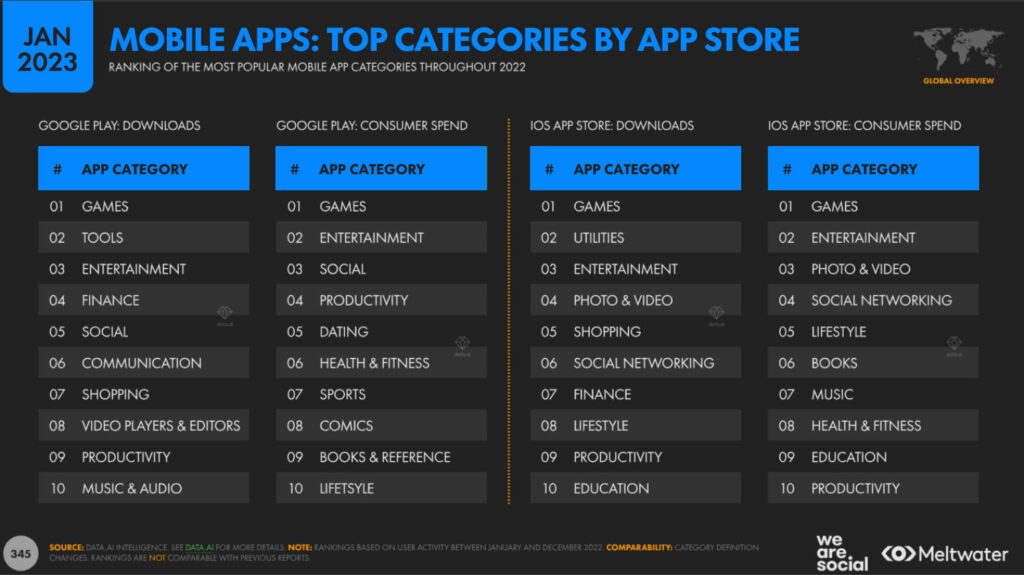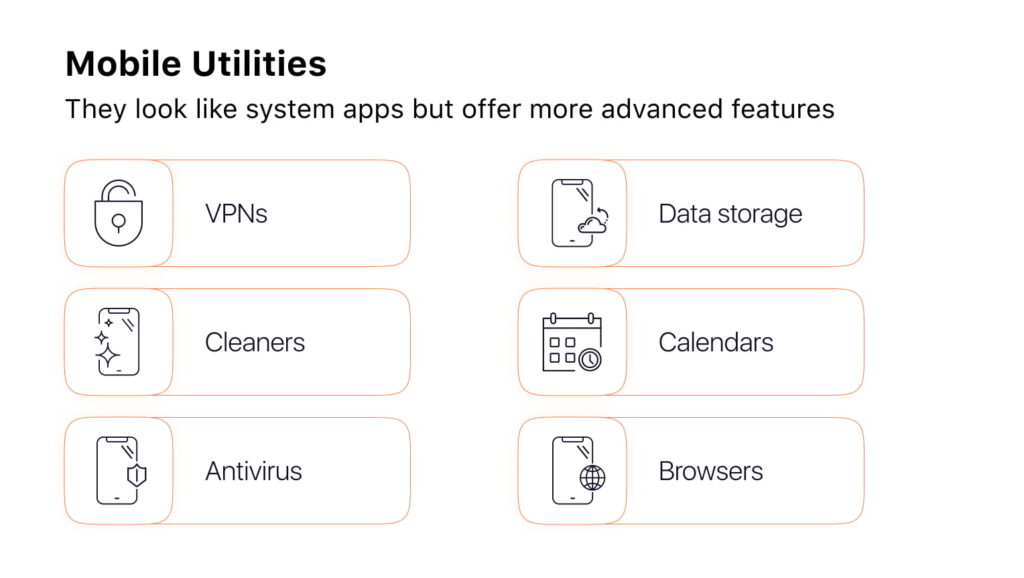Affiliate marketing is solid, but mobile affiliate marketing is the real game-changer! Most visitors come from mobile devices, making the platform the top dog in terms of traffic.
Read the post to learn about mobile affiliate marketing meaning.
Mobile affiliate marketing is a strategy that taps into the extensive use of mobile phones to create revenue through partnerships and referrals. Simply put, it’s a performance-based marketing approach where businesses compensate affiliates for generating mobile traffic. Marketers earn rewards based on key performance indicators (KPIs) set by businesses, such as sales or the number of downloads.
Features of mobile affiliate marketing:
Key players in affiliate marketing for mobile:
Mobile offers are highly specific, and their types determine which conversion flow can be employed. Let’s discuss them!
It’s about services users subscribe to through mobile operating systems. Mobile subscriptions include everything you can envision, from dating to games and horoscopes.

What they have in common is the subscription model. The forte of such offerings is the ease of generating leads. Users walk across the sale funnel more smoothly than ever before, because they don’t have to leave payment card data. Instead, the funds are withdrawn from the mobile account.
Conversion flows: 1-2 click flow, PIN Submit, Premium SMS (Click2SMS, MT/MO) and USSD.
Most likely, they seem to be complex, but this is true only at first glance. You needn’t be fussy about how technologies work, as the only thing separating users from the conversion is 1-2 clicks, the input of phone numbers, or a short verification code.
People use mobile apps for everything – from ordering food to getting a taxi or finding a date. Businesses get it; they know we prefer this pocket-sized convenience over being stuck to a desktop. That’s why apps take the top spot.
Let’s elaborate on what apps users are interested in.

Regardless of the camp, users choose – iOS or Android – they all enjoy playing games. Users on both operating systems are avid consumers of entertainment and are open to investing in relevant applications. If you analyze the stats further, intriguing patterns emerge. For example, Apple users give a high priority to photo and video content apps, while Android shows a greater affinity for dating apps.
To spot trends, you can observe how high-profile apps gain popularity on Data.ai. According to the latest data, the trend for dating apps is growing for iOS users in the USA, a good sign for affiliates seeking the most lucrative customers.
Conversion flows: CPI (cost per install), CPL and Trial.
The most basic type of conversion is CPI (Cost Per Install). Conversion is counted after the app is downloaded. Alternatively, a user is considered a lead if they take any action within the app, such as registering or subscribing.
This vertical rules the app market, as users regard utilities as indispensable for using their smartphones. For a better understanding of utilities, recall system applications: file managers, data storage, calendars and maps. Similar, yet more advanced programs can be downloaded from a browser or app marketplaces – App Store and Google Play.

True fans of utilities are the iOS audience.
Conversion flows: CPI (cost per install), CPL and Trial.
Payouts can vary depending on app functionality and monetization strategy. In some cases, the conversion is counted provided that the user clicks on the affiliate link and pays for a subscription or avails of freemium access.
Mobile games save from boredom that can take over users anytime, anywhere. As a source of entertainment and leisure, mobile games attract a vast and diverse user base, creating a fertile ground for capturing loyal customers. Game genres coming on rage are RPG, strategy, puzzles, shooter, simulation and action.
Conversion flows: CPI, in-app purchases, upgrades
Marketers earn a commission for every mobile game download, a regular case of promoting mobile apps. Despite this, it’s common for games to be downloaded for free, and then users purchase in-game items to access premium features, virtual goods, or additional levels. Some mobile games offer upgraded versions or premium content, and marketers earn commissions when users choose these options.
Typical traffic sources that generate mobile traffic include:
Informed by offer restrictions, experience, and insights, affiliates select the sources they believe will yield the best results.
Mobile penetration varies on GEOs. In some countries, desktop traffic still largely prevails. And although each ad network has a distinct set of top-performing countries to run mobile campaigns, it’s always a good idea to get to know the mobile landscape altogether.
Most mobile traffic comes from tier-3 countries, primarily from African regions: Algeria, Nigeria, Cameroon, Tanzania, South Africa, Morocco;
Examples of countries where desktop traffic reigns at the moment: Guatemala, Honduras, Nicaragua, Costa Rica, Argentina, Paraguay.

Current trends in mobile marketing, according to the GSMA research:
Affiliate marketing is solid, but mobile affiliate marketing is the real game-changer! Most visitors come from mobile devices, making the platform the top dog in terms of traffic.
Read the post to learn about mobile affiliate marketing meaning.
Mobile affiliate marketing is a strategy that taps into the extensive use of mobile phones to create revenue through partnerships and referrals. Simply put, it’s a performance-based marketing approach where businesses compensate affiliates for generating mobile traffic. Marketers earn rewards based on key performance indicators (KPIs) set by businesses, such as sales or the number of downloads.
Features of mobile affiliate marketing:
Key players in affiliate marketing for mobile:
Mobile offers are highly specific, and their types determine which conversion flow can be employed. Let’s discuss them!
It’s about services users subscribe to through mobile operating systems. Mobile subscriptions include everything you can envision, from dating to games and horoscopes.

What they have in common is the subscription model. The forte of such offerings is the ease of generating leads. Users walk across the sale funnel more smoothly than ever before, because they don’t have to leave payment card data. Instead, the funds are withdrawn from the mobile account.
Conversion flows: 1-2 click flow, PIN Submit, Premium SMS (Click2SMS, MT/MO) and USSD.
Most likely, they seem to be complex, but this is true only at first glance. You needn’t be fussy about how technologies work, as the only thing separating users from the conversion is 1-2 clicks, the input of phone numbers, or a short verification code.
People use mobile apps for everything – from ordering food to getting a taxi or finding a date. Businesses get it; they know we prefer this pocket-sized convenience over being stuck to a desktop. That’s why apps take the top spot.
Let’s elaborate on what apps users are interested in.

Regardless of the camp, users choose – iOS or Android – they all enjoy playing games. Users on both operating systems are avid consumers of entertainment and are open to investing in relevant applications. If you analyze the stats further, intriguing patterns emerge. For example, Apple users give a high priority to photo and video content apps, while Android shows a greater affinity for dating apps.
To spot trends, you can observe how high-profile apps gain popularity on Data.ai. According to the latest data, the trend for dating apps is growing for iOS users in the USA, a good sign for affiliates seeking the most lucrative customers.
Conversion flows: CPI (cost per install), CPL and Trial.
The most basic type of conversion is CPI (Cost Per Install). Conversion is counted after the app is downloaded. Alternatively, a user is considered a lead if they take any action within the app, such as registering or subscribing.
This vertical rules the app market, as users regard utilities as indispensable for using their smartphones. For a better understanding of utilities, recall system applications: file managers, data storage, calendars and maps. Similar, yet more advanced programs can be downloaded from a browser or app marketplaces – App Store and Google Play.

True fans of utilities are the iOS audience.
Conversion flows: CPI (cost per install), CPL and Trial.
Payouts can vary depending on app functionality and monetization strategy. In some cases, the conversion is counted provided that the user clicks on the affiliate link and pays for a subscription or avails of freemium access.
Mobile games save from boredom that can take over users anytime, anywhere. As a source of entertainment and leisure, mobile games attract a vast and diverse user base, creating a fertile ground for capturing loyal customers. Game genres coming on rage are RPG, strategy, puzzles, shooter, simulation and action.
Conversion flows: CPI, in-app purchases, upgrades
Marketers earn a commission for every mobile game download, a regular case of promoting mobile apps. Despite this, it’s common for games to be downloaded for free, and then users purchase in-game items to access premium features, virtual goods, or additional levels. Some mobile games offer upgraded versions or premium content, and marketers earn commissions when users choose these options.
Typical traffic sources that generate mobile traffic include:
Informed by offer restrictions, experience, and insights, affiliates select the sources they believe will yield the best results.
Mobile penetration varies on GEOs. In some countries, desktop traffic still largely prevails. And although each ad network has a distinct set of top-performing countries to run mobile campaigns, it’s always a good idea to get to know the mobile landscape altogether.
Most mobile traffic comes from tier-3 countries, primarily from African regions: Algeria, Nigeria, Cameroon, Tanzania, South Africa, Morocco;
Examples of countries where desktop traffic reigns at the moment: Guatemala, Honduras, Nicaragua, Costa Rica, Argentina, Paraguay.

Current trends in mobile marketing, according to the GSMA research: